President William Lai (賴清德) yesterday pledged to strengthen the nation’s air defense capabilities and build a “T-Dome” system to create a safety net against growing military threats from China.
“We will accelerate our building of the T-Dome, establish a rigorous air defense system in Taiwan with multi-layered defense, high-level detection and effective interception, and weave a safety net for Taiwan to protect the lives and property of citizens,” he said in his National Day address.
In his keynote address marking the Republic of China’s (ROC) 114th anniversary, Lai said the lessons of World War II have taught nations worldwide “to ensure that the tragedies of history are never repeated.”
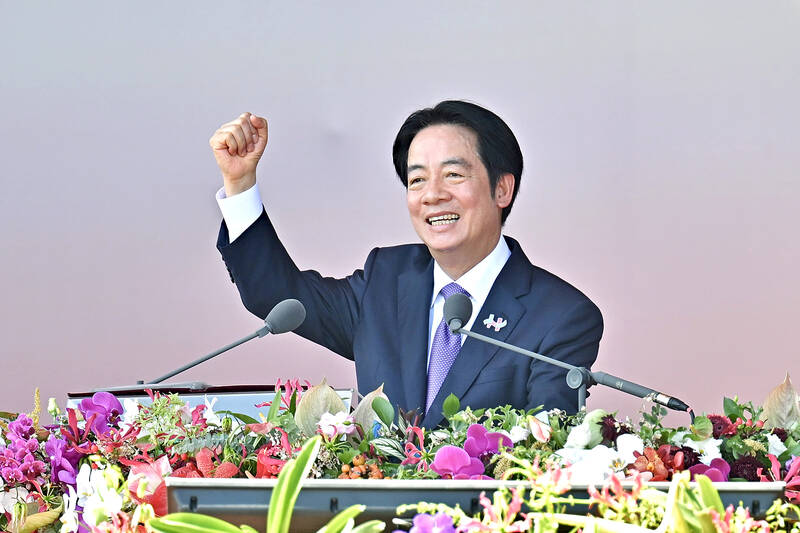
Photo: Tu Chien-jung, Taipei Times
“The outcomes of that conflict tell us that aggression fails, unity prevails and that peace is won through strength,” he said.
Lai reiterated his administration’s commitment to raise Taiwan’s defense budget to 3 percent of GDP next year and 5 percent by 2030, saying that developing the “T-Dome” system is among its key objectives.
He said that Taiwan would integrate “high-tech and artificial intelligence [AI]” to develop a “smart defense combat system,” invest in innovative defense research and cooperate with defense industries in advanced nations to boost domestic capabilities.
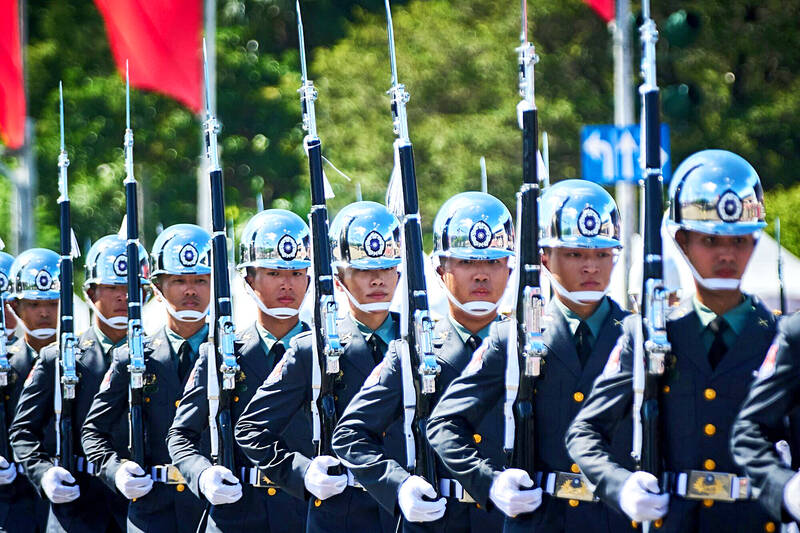
Photo: An Rong Xu, Bloomberg
He did not provide details about the “T-Dome” system.
A Reuters report published late on Thursday ahead of Lai’s speech said the “T-Dome” — short for Taiwan Dome — is intended to counter increasingly complex threats, including drones, rockets, missiles and military aircraft.
Citing multiple unnamed sources, Reuters said the system is modeled after Israel’s Iron Dome missile-defense network, with planning still under way and “initial integration” expected to begin soon, one source said.
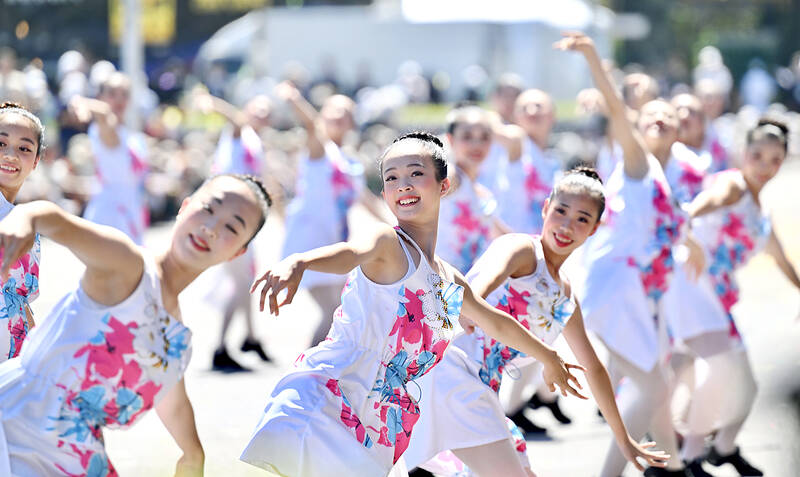
Photo: Lo Pei-de, Taipei Times
Delivering his second National Day address since taking office in May last year, Lai said building a more resilient Taiwan requires closer coordination between the public and private sectors, both in responding to natural disasters and in preparing for a potential Chinese invasion.
“We are determined to maintain peace through strength. We firmly believe that strength is not obtained through military strength alone, but must also rely on resilience throughout society,” Lai said.
In June last year, Lai’s administration established the Whole-of-Society Defense Resilience Committee under the auspices of the Presidential Office.
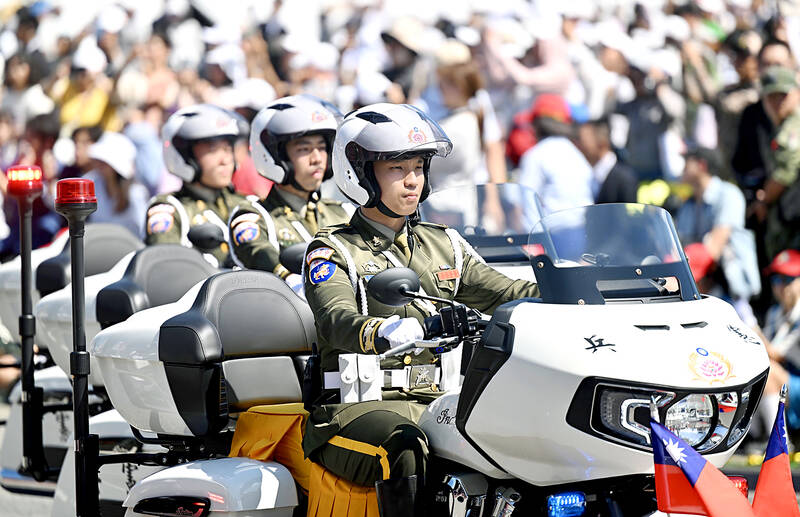
Photo: Lo Pei-de, Taipei Times
Over the past year, the committee has helped improve coordination between the government and the private sector, as well as between central and local authorities, to enhance “integrated disaster prevention and defense,” Lai said.
On cross-strait relations, Lai said his administration looks forward to the day when China “can take responsibility as a major power and cease its distortion of UN General Assembly Resolution 2758 and historical World War II documents.”
“We also hope it will renounce the use of force or coercion to change the status quo across the Taiwan Strait so that we can jointly maintain the peace and stability of the Indo-Pacific,” he said.
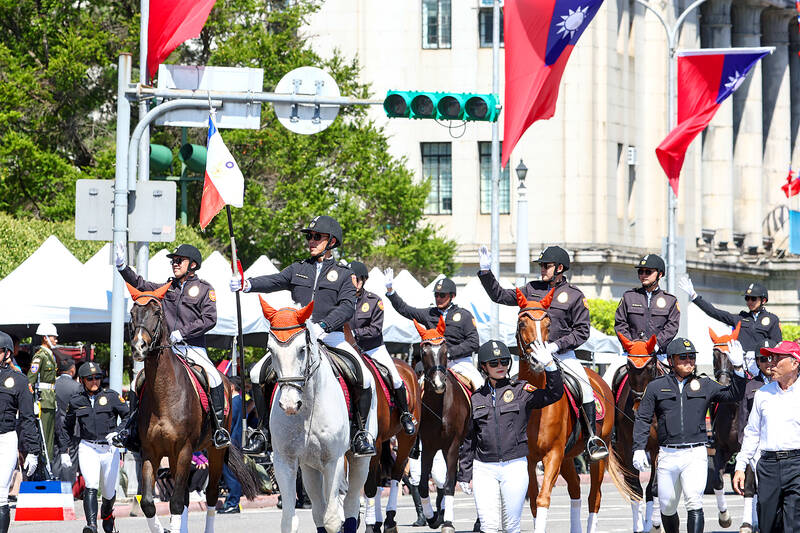
Photo: CNA
Resolution 2758, adopted by the 26th UN General Assembly in 1971, addressed the issue of China’s representation at the international body.
It resulted in Taiwan, officially the ROC, losing its seat as representative of “China” at the UN to the People’s Republic of China (PRC).
Lai called Taiwan a “beacon of democracy” in Asia, drawing a distinction with China’s one-party state.

Photo: Tu Chien-jung, Taipei Times
“Democratic Taiwan ... will strive to maintain the status quo, protect peace and stability in the Taiwan Strait, and promote regional prosperity and development,” he said.
Lai also announced plans to implement 10 new AI infrastructure initiatives aimed at strengthening Taiwan’s position as a global technology leader.
“In addition to helping make Taiwan one of the world’s top five computing centers, we will also invest more vigorously in research and development in three key technological fields — quantum technology, silicon photonics and robotics,” Lai said.
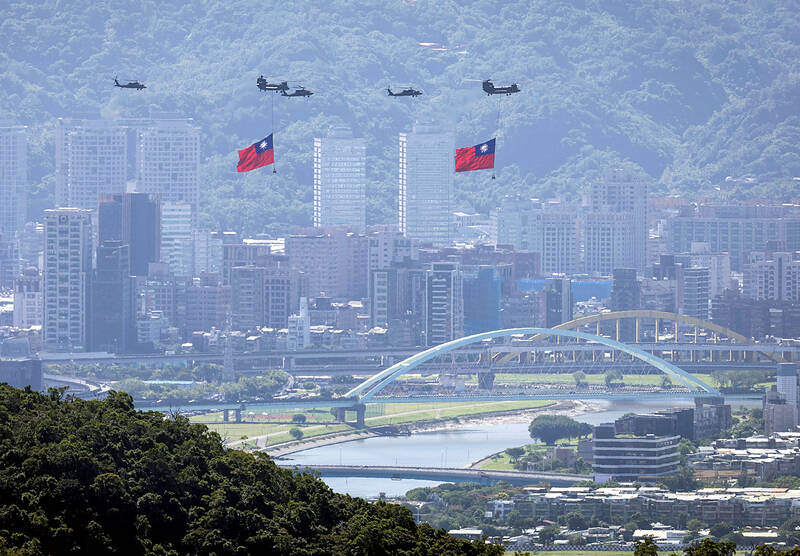
Photo: CNA
He described the initiatives as forming a “chain of guardian mountains” to reinforce Taiwan’s industrial base and expand the application of AI across multiple sectors.
Although Lai offered no further details, his remarks echoed Premier Cho Jung-tai’s (卓榮泰) statement in August that government ministries and agencies would begin allocating budgets for the 10 AI infrastructure projects starting next year, citing the US AI Action Plan released in July as a reference.
Cho said the initiatives would focus on smart applications, infrastructure foundations and core technologies, such as silicon photonics, quantum computing and robotics. Hundreds of billions of New Taiwan dollars would be invested in the plan.
Lai also described 2025 as “a year in which Taiwan rises,” while emphasizing the strength and strategic importance of the nation’s semiconductor, information and communications technology, and electronic component industries in the global supply chain.
“Taiwanese exports continue to reach record highs, while employment is at its strongest level in 25 years,” Lai said.
“Our stock market has risen for six consecutive months, hitting an all-time high of 27,301 points. Taiwan’s market capitalization has exceeded US$3 trillion, making the stock market the eight-largest in the world, while foreign-exchange reserves have surpassed US$600 billion for the first time, setting a new record,” he said.
Taiwan also leads the Four Asian Tigers and China in economic growth, Lai said, citing the Asian Development Bank’s latest forecast of 5.1 percent GDP growth for this year.
In addition to maintaining Taiwan’s competitive edge, the president said that his administration continue to deepen its global partnerships, including efforts to address its trade deficit with the US and advance tariff negotiations with key partners.
National Day is held on the anniversary of a 1911 uprising that led to the overthrow of China’s last imperial dynasty and the establishment of the ROC.
The Nationalist government fled to Taiwan in 1949 after losing a civil war with Mao Zedong’s (毛澤東) communists, and the ROC remains Taiwan’s formal name.
The PRC was established on Oct. 1, 1949, two months before the ROC government relocated to Taiwan.
Responding to the speech, Chinese Ministry of Foreign Affairs spokesperson Guo Jiakun (郭嘉昆) said that “seeking independence by force” would only drag Taiwan into conflict.
“He peddles the separatist fallacy of Taiwanese independence,” Guo said in Beijing. “This once again exposes his stubborn nature as a troublemaker, creator of danger and a warmaker.”
A US administration official said the US welcomed Lai’s commitment to increase defense spending and comments on ensuring peace and stability.
“We’re not going to speculate on how Beijing might react, but our general policy is that we don’t think routine speeches should be used as a pretext for taking any sort of coercive or military action,” the official said.
Additional reporting by agencies

CROSS-STRAIT COLLABORATION: The new KMT chairwoman expressed interest in meeting the Chinese president from the start, but she’ll have to pay to get in Beijing allegedly agreed to let Chinese Nationalist Party (KMT) Chairwoman Cheng Li-wun (鄭麗文) meet with Chinese President Xi Jinping (習近平) around the Lunar New Year holiday next year on three conditions, including that the KMT block Taiwan’s arms purchases, a source said yesterday. Cheng has expressed interest in meeting Xi since she won the KMT’s chairmanship election in October. A source, speaking on condition of anonymity, said a consensus on a meeting was allegedly reached after two KMT vice chairmen visited China’s Taiwan Affairs Office Director Song Tao (宋濤) in China last month. Beijing allegedly gave the KMT three conditions it had to

STAYING ALERT: China this week deployed its largest maritime show of force to date in the region, prompting concern in Taipei and Tokyo, which Beijing has brushed off Deterring conflict over Taiwan is a priority, the White House said in its National Security Strategy published yesterday, which also called on Japan and South Korea to increase their defense spending to help protect the first island chain. Taiwan is strategically positioned between Northeast and Southeast Asia, and provides direct access to the second island chain, with one-third of global shipping passing through the South China Sea, the report said. Given the implications for the US economy, along with Taiwan’s dominance in semiconductors, “deterring a conflict over Taiwan, ideally by preserving military overmatch, is a priority,” it said. However, the strategy also reiterated
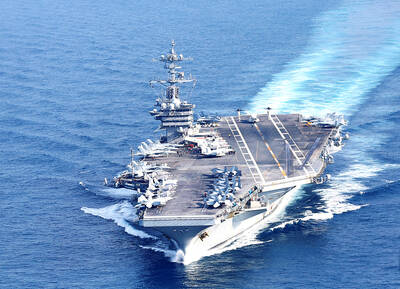
‘BALANCE OF POWER’: Hegseth said that the US did not want to ‘strangle’ China, but to ensure that none of Washington’s allies would be vulnerable to military aggression Washington has no intention of changing the “status quo” in the Taiwan Strait, US Secretary of Defense Pete Hegseth said on Saturday, adding that one of the US military’s main priorities is to deter China “through strength, not through confrontation.” Speaking at the annual Reagan National Defense Forum in Simi Valley, California, Hegseth outlined the US Department of Defense’s priorities under US President Donald Trump. “First, defending the US homeland and our hemisphere. Second, deterring China through strength, not confrontation. Third, increased burden sharing for us, allies and partners. And fourth, supercharging the US defense industrial base,” he said. US-China relations under

The Chien Feng IV (勁蜂, Mighty Hornet) loitering munition is on track to enter flight tests next month in connection with potential adoption by Taiwanese and US armed forces, a government source said yesterday. The kamikaze drone, which boasts a range of 1,000km, debuted at the Taipei Aerospace and Defense Technology Exhibition in September, the official said on condition of anonymity. The Chungshan Institute of Science and Technology and US-based Kratos Defense jointly developed the platform by leveraging the engine and airframe of the latter’s MQM-178 Firejet target drone, they said. The uncrewed aerial vehicle is designed to utilize an artificial intelligence computer